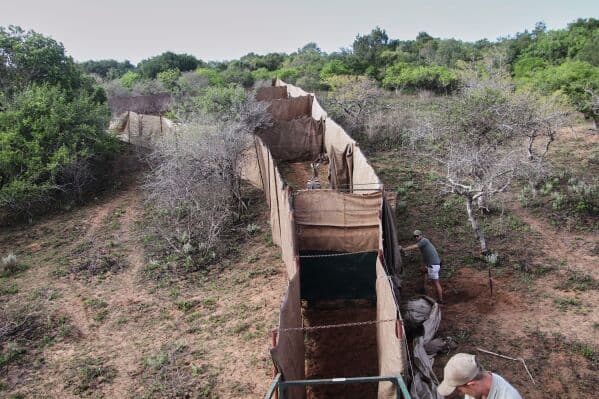Loading News Article...
We're loading the full news article for you. This includes the article content, images, author information, and related articles.
We're loading the full news article for you. This includes the article content, images, author information, and related articles.
Decades after civil war and poaching decimated its animal populations, Mozambique's Banhine National Park is undergoing a significant restoration, with hundreds of animals being reintroduced to revitalise its ecosystem and boost eco-tourism.

Banhine National Park in Mozambique, once a thriving wildlife haven likened to the Serengeti, is experiencing a remarkable rebirth. Fifty years ago, the park teemed with diverse herds of giraffe, buffalo, and antelope. However, a prolonged civil war from 1977 to 1992 and rampant poaching stripped the reserve almost bare.
Today, a collaborative project involving private conservationists and the Mozambican government is actively restoring Banhine to its former glory. Essential infrastructure, including fences and roads, has been rebuilt, paving the way for the reintroduction of wildlife.
Mozambique's 15-year civil war had a devastating impact on its national parks and wildlife. Large mammal populations in areas like Gorongosa National Park plummeted by over 90% due to hunting for food by soldiers and widespread poaching for ivory, which was often traded for weapons. The conflict led to the local extinction of several species in some protected areas. Banhine National Park, established in 1973 to conserve giraffe and ostrich populations, suffered a similar fate, with these and other species nearly eradicated.
The restoration of Banhine National Park is a testament to renewed conservation efforts in Mozambique. The National Administration of Conservation Areas (ANAC), which manages the country's conservation areas, coordinates the operation alongside the Peace Parks Foundation, an international organisation focused on transfrontier parks. This partnership underscores a commitment to long-term ecological restoration and sustainable tourism.
Private conservationists are working closely with the Mozambican government on this ambitious project. The animals being reintroduced to Banhine originate from other conservation areas, such as Maputo National Park, which itself underwent a successful rehabilitation approximately 15 years ago. Abel Nhabanga, the administrator of Banhine National Park, highlighted the historical significance of the moment, recalling when Banhine was known as the 'Little Serengeti' due to its extraordinary biodiversity.
Approximately 400 animals, including zebra, wildebeest, reedbucks, hartebeests, and impalas, have been transported by truck to Banhine National Park. This reintroduction is part of a larger plan to bring in around 1,100 animals by the end of 2026. The animals are initially released into an 8-square-mile (approximately 20 square kilometres) 'sanctuary' within the park, where they will acclimatise before being released into the wider reserve. Feasibility studies confirmed that the park possesses favourable environmental conditions to support these species and maintain ecological balance.
The success of such large-scale translocations hinges on careful planning and execution. The process of moving animals is delicate and challenging, often involving herding them with helicopters into funnel-shaped enclosures before loading them into crates for long journeys. While the reintroduction aims to boost tourism and bring economic benefits to local communities, ongoing vigilance against poaching and habitat encroachment remains crucial.
While the immediate focus is on re-establishing herbivore populations, the reintroduction of predators will be a subsequent, carefully managed phase. The long-term ecological impact of such extensive rewilding, particularly in areas previously devastated by conflict, continues to be studied. The genetic diversity of the reintroduced populations is also a key consideration to ensure their long-term viability.
The current reintroduction of 400 animals is a significant step in Banhine's restoration, with plans to introduce an additional 1,100 animals by the end of 2026. The park has also seen investments in new infrastructure, ranger training, and community development programmes, including the integration of 35 new rangers in 2024. A long-term co-management agreement between Peace Parks Foundation and the Government of Mozambique is expected to ensure ongoing rehabilitation and community development around the park.
Observers will be keenly watching the acclimatisation and breeding success of the reintroduced animals in Banhine. The expansion of the sanctuary area and the eventual release of animals into the broader 7,256 square kilometre park will be critical milestones. The development of eco-tourism initiatives and their impact on local communities will also be a key area of focus. Kenya, a leader in wildlife conservation, has also undertaken significant translocation projects, such as moving 21 eastern black rhinos to Segera Conservancy in Laikipia in May 2025 to enhance genetic diversity and habitat range, aiming for a national black rhino population of 2,000 by 2037. Such efforts highlight a regional commitment to restoring and protecting Africa's iconic wildlife.
Keep the conversation in one place—threads here stay linked to the story and in the forums.
Other hot threads
E-sports and Gaming Community in Kenya
Active 6 months ago
Popular Recreational Activities Across Counties
Active 6 months ago
The Role of Technology in Modern Agriculture (AgriTech)
Active 6 months ago
Investing in Youth Sports Development Programs
Active 6 months ago